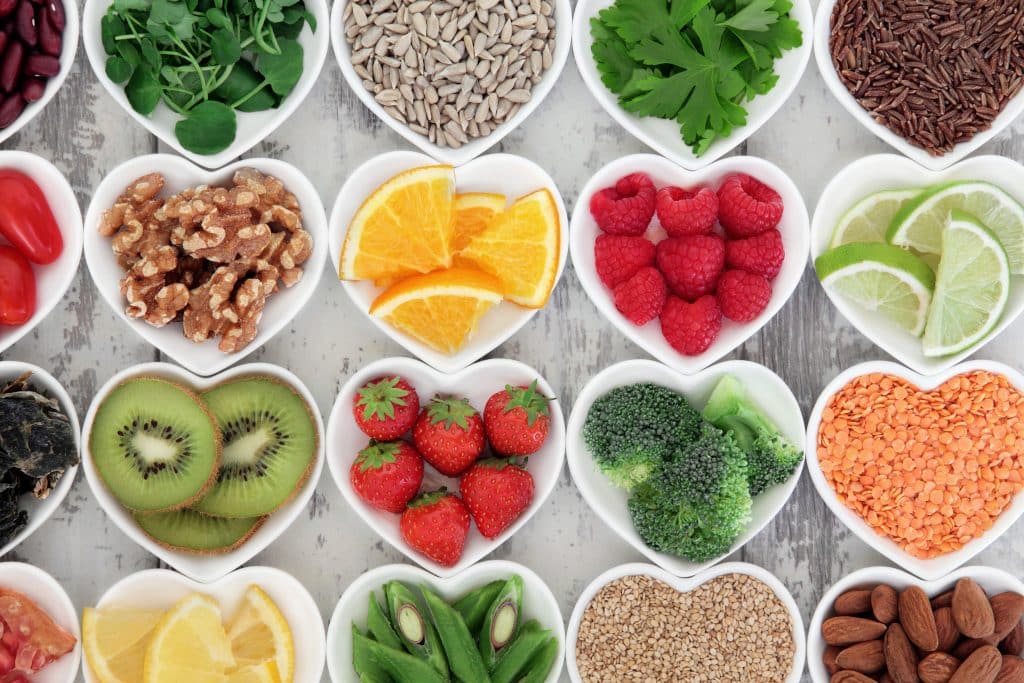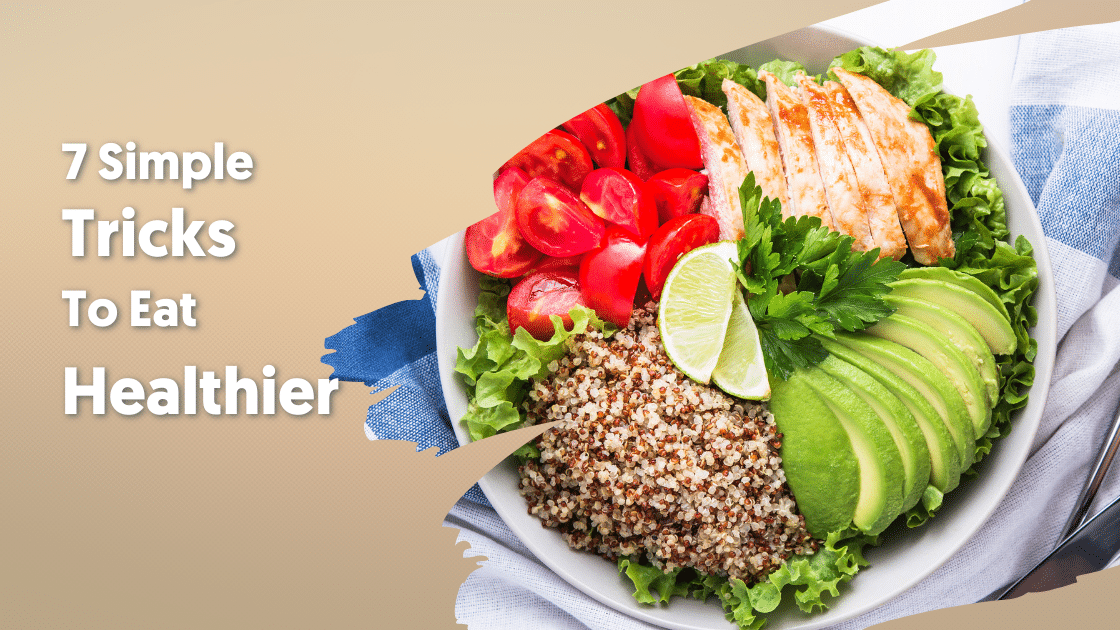Most people like the idea of eating healthy, but often have a hard time sticking to it long-term. Whether you have trouble incorporating it into your daily routine or you simply don’t want to eat the same bland, boring food day after day, there are things you can do to easily make a well-balanced diet part of your lifestyle. Learn 7 simple tricks to eat healthier and start feeling your best!

1. Take Your Time
It’s important to remember to take things slow while you’re just starting out. After all, there’s a lot to learn. Not to mention, everyone has their own interpretation of what eating healthy looks like. Try making only one or two small changes to your diet at a time. This way, you won’t feel too overwhelmed.
You can take the same approach by trying new healthy foods too. Look for recipes that use vegetables that you haven’t eaten before and pick a different one to try each week or even each month. You’ll end up with new healthy recipes and even some new favorite foods after a few months!
2. Track Your Progress
You might not realize that you’re not actually eating as much healthy food as you thought. Even with the best intentions, it’s easy to lose track of just how little of the good stuff you’ve actually consumed. The best way to be mindful of your food choices is to track your food. You don’t have to do this forever, but it will help make sure you’re getting the nutrition that you need.
Whether you prefer pen and paper or to digitally log your food online, there are plenty of different options you can choose from. For example, the MyPlate app is easy to use and incredibly informative about the nutrients of your food. After tracking your progress for a bit, you might be amazed to see what you’re under and overindulging on. They even provide charts and graphs that show the areas you could aim to improve in.
3. Avoid Ultra Processed Junk
It might sound like a no-brainer, but one of the easiest ways to eat healthier is to choose less processed food. Sure, pre-made food is convenient, especially if you have a hectic schedule. With that, however, comes preservatives and extra stuff that isn’t super healthy, like added sugar and excessive amounts of sodium. Not to mention, processed foods have relatively few vitamins and minerals.
Ultra-processed foods are also extremely easy to overeat. For instance, a bag of chips or a sleeve of cookies is practically designed for you to eat mindlessly. They tend to have multiple serving sizes in one package too, making it tougher to control how much you’re actually consuming. Planning your meals ahead of time can encourage your decision to eat better. Prioritize making dishes using whole ingredients. This way, you’ll start to instinctively reach for healthier foods instead of junk food.
4. Balance Your Plate
Eating healthy is all about finding the right balance, and your plate should reflect that balance. Aim to fill half of your plate with vegetables, a quarter with lean protein, and one serving of fruit at each meal. Prioritize eating the protein and veggies first before anything else, that way you’re guaranteed to get all the good stuff before feeling full.
There are plenty of delicious options that hit your morning protein goal. Things like hard boiled eggs, cottage cheese, and nut butter are some great examples. As for lunch and dinner, 3-4 ounces of chicken breast or fish will do the trick. For reference, a deck of playing cards is roughly the size of 3 ounces.
Click here to learn how to measure portions like a pro!
5. Plan And Prep
Planning and prepping your meals doesn’t have to be overwhelming or even complicated. In fact, it can be pretty simple (and beneficial) once you get the hang of it. Start by making a list of your family’s 10 favorite meals. Set aside a few minutes at the end of each week to plan your meals for the following week. Choose easier, quicker ones for the days you know will be extra busy or later than usual. You can also plan around the food you need to use up before it goes bad.
Keep your plan in mind when you’re grocery shopping too. This way, you’ll get everything you need and maybe even buy some staples in bulk to save some money. And since you know exactly what you’re going to eat each day, you’ll know what you need to thaw and defrost, and when. The simple act of planning takes a ton of stress and guesswork out of your day. Better yet, you’re less likely to give in and order takeout because you’re exhausted to decide what you want (or if you even have the ingredients on hand.)
6. Make Some Sensible Swaps
One of the most valuable skills you can learn is how to make sensible food swaps. Swapping out different ingredients allows you to create healthier meals without sacrificing flavor. This way, you can still enjoy your favorite foods and not feel like you’re depriving yourself. Not to mention, you’re far less likely to break down and binge all the things you’ve been avoiding.
A common healthy food swap is using cauliflower rice instead of white rice, or lettuce wraps in place of sandwich bread. Even something as simple as opting for a protein nut butter over traditional peanut butter can help you get some extra protein in your diet.
Cut some unnecessary carbs by ditching the tortilla shell and eating your taco out of a bowl. The same principle applies to burritos and even pizza, by the way. Simply throw together your favorite veggies and proteins with a bit of sauce for a quick and filling healthy dish. Pasta lovers can get their fix with zucchini or spaghetti squash noodles. Start out slow by mixing equal parts zucchini noodles and whole wheat pasta. You’ll be surprised how good healthy can taste!
7. Up Your Water Game
If your goal is to start eating healthier, you should also make sure you’re drinking healthier too. You might not realize it, but drinking water regulates your temperature, flushes toxins and waste from the body, and even protects your joints. So, it’s important to get plenty of water, either through drinking or eating foods that contain water.
Start by swapping sugary pops and tea for water. For something with a bit of flavor, squeeze in some fresh lemon juice or use a water enhancer. If you’re having a difficult time ditching your favorite beverages, create a reward system for yourself. Make it point to have a glass of water before you drink anything else. And make it a point to bring a water bottle everywhere you go, so there’s no excuse as to why you’re not staying hydrated.



